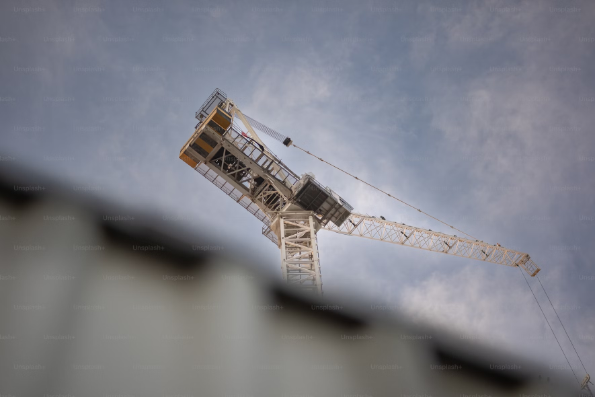Can the city of Turku achieve emission-free construction sites?
Copyright: Pixabay
Copyright: Unsplash
Climate change and zero emissions are themes that have taken centre stage in all sectors and governmental decisions nowadays. Changes must be made in all industries to reach the climate and emission targets. Regarding construction sites, the zero-emission construction sites green deal agreement has been drawn up, in which the city of Turku is involved. The aim is that by 2030, 50% of all city construction transportation and sites will be free of fossil fuel use.
The city of Turku is involved in the EU-funded SCALE-UP project. The project has 10 measures for the Turku Urban Node. One of the measures is carbon-free city logistics and construction sites, for which two Turku University of Applied Sciences students, Mrs Nelli Kontturi and Mr Eino Tähkäpää, have completed their theses (see also our previous article on how the Turku Urban Node integrates young researchers in their work of SCALE-UP).
Changes in construction vehicles and transitions are the most effective means of reducing the emissions generated
The title of the first thesis is “Means of Furthering Sustainable Traffic and Mobility on Construction Sites – case Kuntec Oy”. This thesis aimed to map different ways to promote sustainable traffic and mobility on construction sites to reduce the amount of greenhouse gas emissions generated by these activities. The thesis focused especially on small construction sites. Mrs Nelli Kontturi, the author of the thesis, interviewed the CEO of Kuntec Oy to discover the company’s procedures, thoughts and possibilities regarding sustainable traffic and mobility.
Based on the interview with Kuntec’s CEO, the company is already doing many activities to promote sustainability in terms of traffic and mobility. However, a literature review revealed additional ways the company could implement to make its activities even more emission-free. These means can be exploited in the activities of other construction companies in addition to Kuntec.
Recommended means entail:
Investing in sustainable commuting;
Making sustainable transitions between the sites;
Advancing the sustainability in terms of material transportation;
Advancing the sustainability of construction vehicles;
Other ways to promote sustainability.
Since construction vehicles and transitions cause the most carbon emissions, it is important to focus on changing habits regarding these. It is important to promote the use of electric construction vehicles, re-evaluate the need for construction vehicles from time to time, pay attention to small things when driving the vehicle for optimal energy consumption and consideration of sustainable and electric options before purchasing a new construction vehicle or consider whether it is to make an old vehicle more emission-free by maintaining or retrofitting vehicles according to the paradigm reduce-reuse-recycle before purchasing new pieces of equipment.
The pilot project examined the replacement of construction vehicles with electric ones
The title of the second thesis is “Replacing Heavy Machinery Powered by Internal Combustion Engines with Electric Substitutes – Zero Emission Construction Sites – Green Deal”. This thesis aimed to research the calculation of greenhouse emissions from construction sites and the effect of electrification of construction vehicles on emissions.
Mr Eino Tähkäpää, the author of the thesis, chose As Oy Turku’s Harppuuna Kippari construction site as the pilot project. Companies Premico Consulting Oy and Mangrove Oy are working jointly on the site. The project was found to be suitable from the point of view of the study because the project complies with the EU taxonomy, its emissions are monitored by the main contractor and the project is going to apply for the BREEAM certificate. The study was conducted in the form of site visits and interviews.
Copyright: Unsplash
Based on the study, the highest emissions of the pilot project are generated from the framework phase, i.e. heating during construction and concreting of slabs. The second highest emissions are generated from the water roof, facade and interior manufacturing phases. Emissions come from transporting materials, moving, lifting and personal lifts. The next highest emissions are caused by the ground construction phase, then the foundation phase, the surface structures of the yard area and lastly waste management (only waste transports are considered). To reduce emissions, the equipment, the methods or both must be changed.
In the study, the carbon dioxide emissions generated for the completed works were calculated. Replacement electrically powered versions were sought for the construction vehicles used in the completed works. Based on the study, it is possible to complete 97 % of the pilot project’s works with electronic machines, if the available machines are used. However, it is necessary to consider the schedule of the project and the number of electronic machines, incentives through which contractors can be supported in electrification processes, the planning of the electrical plan for the pilot project and the planning of heating during work.
The title asked, “Can the city of the Turku achieve emission-free construction sites?”. Based on this research question, the answer is theoretically yes. Both theses showcased that it is possible to realize construction sites with e-machinery and achieve nearly zero emissions. At the moment, however, there are still challenges in the transition to zero emissions related to, for example, procurement structures, lack of knowledge and negative attitudes. It is therefore possible to achieve emission-free construction sites, but this requires cooperation, communication and guidance.



